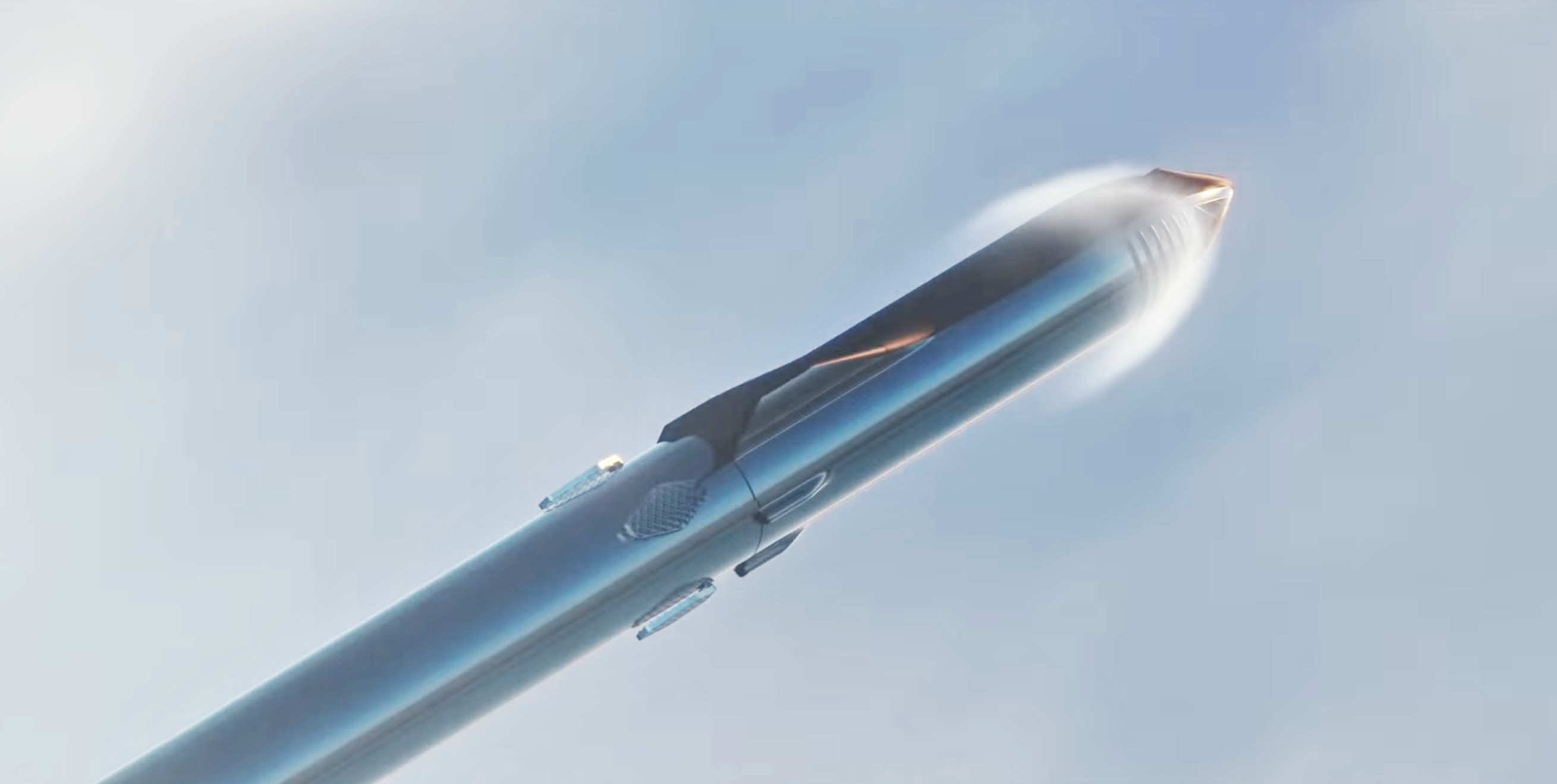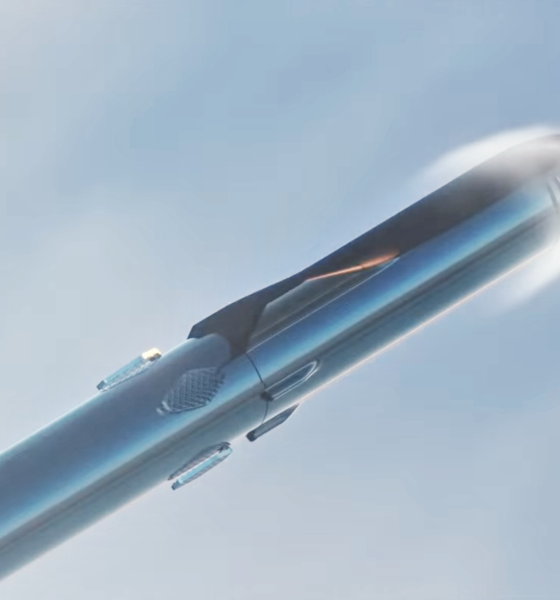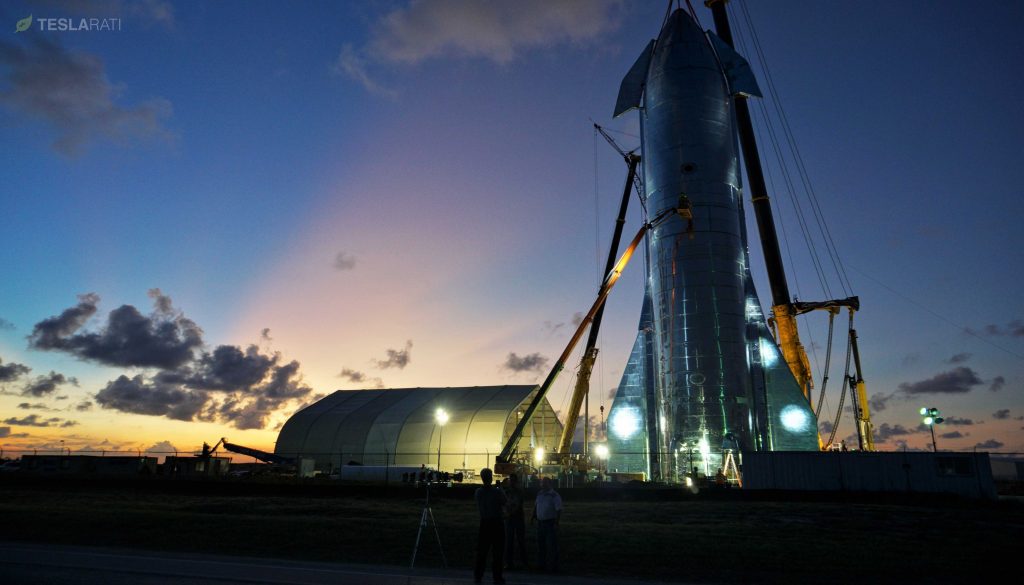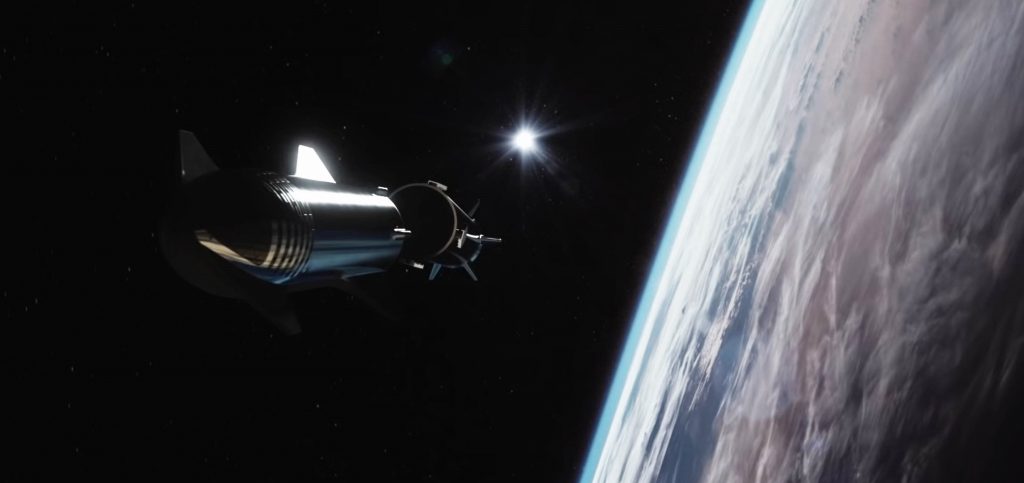

News
SpaceX CEO Elon Musk lays out Starship’s path to orbit with sights set on 2020 debut
Speaking on September 28th, SpaceX CEO Elon Musk sketched out a fairly detailed picture of Starship’s path to orbit, from the first flight of the first full-scale prototype to the spacecraft’s inaugural orbital launch atop a Super Heavy booster.
Incredibly, Musk was persistent with claims that he has challenged SpaceX’s Starship teams to conduct the next-generation rocket’s first orbital launch within six months, drawing a line in the sand around April 1st, 2020 (?). How, then, does the SpaceX CEO foresee the next year or so playing out?
A whole lotta ‘Ships
As is the company’s signature, Musk confirmed that the Starship development program will continue to be highly distributed, hardware-rich, and focused on an iterative and continuous process of learning by doing. Starhopper is perhaps the best emblem of this methodology, defying almost every conceivable aerospace industry norm to successfully build and repeatedly fly what was essentially a rocket built outside by water tower welders.
Starhopper may have scarcely been meant to fly at all, serving almost entirely as a proof of concept and learning experience, but Musk strongly suggested that future Starship prototypes will replicate its highly iterative, learning-on-the-job approach to development. In short, much like SpaceX has nearly completed Starship Mk1 (and Mk2) from scratch in less than six months, SpaceX’s development strategy involves building a lot of Starship prototypes as quickly as possible.
Specifically, Elon Musk stated – in his opinion – that SpaceX will likely attempt its first orbital Starship-Super Heavy launch immediately after Starship Mk1’s first flight attempt, a suborbital launch to ~20 km (12.5 mi). Assuming that test – far more critical than any of Starhopper’s travails – is successful, the very next Starship flight could be an orbital launch attempt.

First and foremost, Musk was pretty clear that the rough schedule he laid out was a “stream of consciousness”. Indeed, the eccentric CEO contradicted (or updated) himself over the course of answering the same question, stating that “[SpaceX] would fly to orbit with [Starship] Mk3” before saying that that it would actually be “Mk4 or Mk5”. Musk is still undoubtedly set on announcing gobsmackingly ambitious schedules for his projects, but it’s worth noting just how serious he seemed while discussing Starship’s development timeline.
He noted that SpaceX will likely “have [Starship] Mk2 built within a couple of months – or less”, referring to the second prototype currently in the late stages of integration at the company’s similar Cocoa, FL facilities. Additionally, Musk indicated that Starship Mk3 – yet to begin construction in Boca Chica – could be finished as few three months from now (around the start of 2020), with Starship Mk4 – to be built in Florida – could be just one to two months behind (NET Feb/March 2020). Correcting his previous statement, whether intentional or not, Musk also added that SpaceX’s first orbital Starship launch attempt would likely involve either the Mk4 or Mk5 prototype and occur “less than six months from now”.
As a slight consolation to the eyewateringly ambitious timeline he laid out, Musk qualified his “six months to orbit” target by acknowledging that it would only be achievable “provided the rate of design and manufacturing improvement continues to be exponential”. If that remains the case, as he believes it has been over the last six or so months, then SpaceX could be ready for the first orbital Starship launch attempt as few as 6-9 months from now – sometime in the first half of 2020.
A lot will undoubtedly have to go very right for that to remain anywhere within the realm of plausibility. This includes the rapid maturation of Starship’s Raptor engine and vacuum-optimized variant, the successful completion of Starship Mk1’s 20km flight test, the assembly and static fire of the first Super Heavy booster(s), the construction of brand new orbital launch facilities, and the FAA’s approval of all aforementioned flight operations.

Needless to say, the odds are heavily stacked against Musk’s goal of reaching orbit within six months. There is undoubtedly a chance that SpaceX can pull it off, even if success would essentially involve constructing a bridge while driving off a cliff. However, the most important thing to note is that even if Elon Musk is a factor of 1.5, 2, 3, or even 4 times off and Starship reaches orbit for the first time 12 or 18 or 24 months from now, it will still have been an incredibly brisk period of development for a rocket as large, high-performance, and ambitious as Starship/Super Heavy.
It should also be made clear that, while it’s utterly beyond the present capabilities of NASA and other space agencies/companies of the 21st century, Saturn V went from paper to its first orbital launch in just five years. Depending on how one perceives Starship development, it could be said that SpaceX began development – particularly marked by Raptor engine prototype testing – as early as 2016. Suffice it to say that it’s far from impossible that Starship’s first orbital launch will happen next year, even if the challenges SpaceX faces are immense.
Check out Teslarati’s Marketplace! We offer Tesla accessories, including for the Tesla Cybertruck and Tesla Model 3.

Elon Musk
Elon Musk’s X will start using a Tesla-like software update strategy
The initiative seems designed to accelerate updates to the social media platform, while maintaining maximum transparency.

Elon Musk’s social media platform X will adopt a Tesla-esque approach to software updates for its algorithm.
The initiative seems designed to accelerate updates to the social media platform, while maintaining maximum transparency.
X’s updates to its updates
As per Musk in a post on X, the social media company will be making a new algorithm to determine what organic and advertising posts are recommended to users. These updates would then be repeated every four weeks.
“We will make the new 𝕏 algorithm, including all code used to determine what organic and advertising posts are recommended to users, open source in 7 days. This will be repeated every 4 weeks, with comprehensive developer notes, to help you understand what changed,” Musk wrote in his post.
The initiative somewhat mirrors Tesla’s over-the-air update model, where vehicle software is regularly refined and pushed to users with detailed release notes. This should allow users to better understand the details of X’s every update and foster a healthy feedback loop for the social media platform.
xAI and X
X, formerly Twitter, has been acquired by Elon Musk’s artificial intelligence startup, xAI last year. Since then, xAI has seen a rapid rise in valuation. Following the company’s the company’s upsized $20 billion Series E funding round, estimates now suggest that xAI is worth tens about $230 to $235 billion. That’s several times larger than Tesla when Elon Musk received his controversial 2018 CEO Performance Award.
As per xAI, the Series E funding round attracted a diverse group of investors, including Valor Equity Partners, Stepstone Group, Fidelity Management & Research Company, Qatar Investment Authority, MGX, and Baron Capital Group, among others. Strategic partners NVIDIA and Cisco Investments also continued support for building the world’s largest GPU clusters.
News
Tesla FSD Supervised wins MotorTrend’s Best Driver Assistance Award
The decision marks a notable reversal for the publication from prior years, with judges citing major real-world improvements that pushed Tesla’s latest FSD software ahead of every competing ADAS system.

Tesla’s Full Self-Driving (Supervised) system has been named the best driver-assistance technology on the market, earning top honors at the 2026 MotorTrend Best Tech Awards.
The decision marks a notable reversal for the publication from prior years, with judges citing major real-world improvements that pushed Tesla’s latest FSD software ahead of every competing ADAS system. And it wasn’t even close.
MotorTrend reverses course
MotorTrend awarded Tesla FSD (Supervised) its 2026 Best Tech Driver Assistance title after extensive testing of the latest v14 software. The publication acknowledged that it had previously criticized earlier versions of FSD for erratic behavior and near-miss incidents, ultimately favoring rivals such as GM’s Super Cruise in earlier evaluations.
According to MotorTrend, the newest iteration of FSD resolved many of those shortcomings. Testers said v14 showed far smoother behavior in complex urban scenarios, including unprotected left turns, traffic circles, emergency vehicles, and dense city streets. While the system still requires constant driver supervision, judges concluded that no other advanced driver-assistance system currently matches its breadth of capability.
Unlike rival systems that rely on combinations of cameras, radar, lidar, and mapped highways, Tesla’s FSD operates using a camera-only approach and is capable of driving on city streets, rural roads, and freeways. MotorTrend stated that pure utility, the ability to handle nearly all road types, ultimately separated FSD from competitors like Ford BlueCruise, GM Super Cruise, and BMW’s Highway Assistant.
High cost and high capability
MotorTrend also addressed FSD’s pricing, which remains significantly higher than rival systems. Tesla currently charges $8,000 for a one-time purchase or $99 per month for a subscription, compared with far lower upfront and subscription costs from other automakers. The publication noted that the premium is justified given FSD’s unmatched scope and continuous software evolution.
Safety remained a central focus of the evaluation. While testers reported collision-free operation over thousands of miles, they noted ongoing concerns around FSD’s configurable driving modes, including options that allow aggressive driving and speeds beyond posted limits. MotorTrend emphasized that, like all Level 2 systems, FSD still depends on a fully attentive human driver at all times.
Despite those caveats, the publication concluded that Tesla’s rapid software progress fundamentally reshaped the competitive landscape. For drivers seeking the most capable hands-on driver-assistance system available today, MotorTrend concluded Tesla FSD (Supervised) now stands alone at the top.
News
Elon Musk’s Grokipedia surges to 5.6M articles, almost 79% of English Wikipedia
The explosive growth marks a major milestone for the AI-powered online encyclopedia, which was launched by Elon Musk’s xAI just months ago.

Elon Musk’s Grokipedia has grown to an impressive 5,615,201 articles as of today, closing in on 79% of the English Wikipedia’s current total of 7,119,376 articles.
The explosive growth marks a major milestone for the AI-powered online encyclopedia, which was launched by Elon Musk’s xAI just months ago. Needless to say, it would only be a matter of time before Grokipedia exceeds English Wikipedia in sheer volume.
Grokipedia’s rapid growth
xAI’s vision for Grokipedia emphasizes neutrality, while Grok’s reasoning capabilities allow for fast drafting and fact-checking. When Elon Musk announced the initiative in late September 2025, he noted that Grokipedia would be an improvement to Wikipedia because it would be designed to avoid bias.
At the time, Musk noted that Grokipedia “is a necessary step towards the xAI goal of understanding the Universe.”
Grokipedia was launched in late October, and while xAI was careful to list it only as Version 0.1 at the time, the online encyclopedia immediately earned praise. Wikipedia co-founder Larry Sanger highlighted the project’s innovative approach, noting how it leverages AI to fill knowledge gaps and enable rapid updates. Netizens also observed how Grokipedia tends to present articles in a more objective manner compared to Wikipedia, which is edited by humans.
Elon Musk’s ambitious plans
With 5,615,201 total articles, Grokipedia has now grown to almost 79% of English Wikipedia’s article base. This is incredibly quick, though Grokipedia remains text-only for now. xAI, for its part, has now updated the online encyclopedia’s iteration to v0.2.
Elon Musk has shared bold ideas for Grokipedia, including sending a record of the entire knowledge base to space as part of xAI’s mission to preserve and expand human understanding. At some point, Musk stated that Grokipedia will be renamed to Encyclopedia Galactica, and it will be sent to the cosmos.
“When Grokipedia is good enough (long way to go), we will change the name to Encyclopedia Galactica. It will be an open source distillation of all knowledge, including audio, images and video. Join xAI to help build the sci-fi version of the Library of Alexandria!” Musk wrote, adding in a later post that “Copies will be etched in stone and sent to the Moon, Mars and beyond. This time, it will not be lost.”








